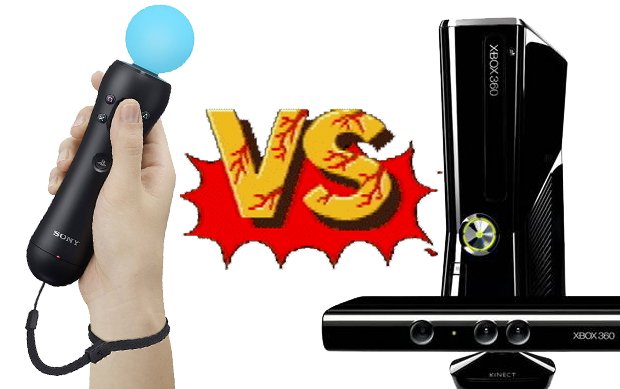Kinect vs. Move: The motion controller hands-on deathmatch
Or hands-off in Kinect's case. Either way, here's our comparison verdict
But are they any good? And if so, which is best? And if not, which is least worst? And most importantly, which one has the most potential for you, the hardcore gamer? Are they really going to be a relevant part of gaming’s future, or just a laggy waggle fad that will be gone in a year? Having played with both now, we decided it was time to weigh all of that up and declare a winner by way of a straight vs. deathmatch. Two controllers enter, one controller leaves. And the first question is...

How well do they work?
Kinect
We had our doubts about Kinect’s promises when Microsoft first unveiled it under the Natal name at E3 2009.And our doubts wereas big as moderately-sized planets, and nearly as heavy. Real-time, full-body motion control? Games we could play by simply miming them? Consoles that would recognise our faces and emotional states? What kind of smoke-and-mirrors holodeck witchcraft was this? But believe it or not, Kinect does work. Mostly. Or rather, eventually. Allow us to explain.
Above: It's way better than this in normal circumstances, we promise
First things first. Kinect’s motion tracking technology is pretty damn amazing. And believe us, we made a point of putting it through its paces at every opportunity. Every chance we got to test it with a little gratuitous gesture, we did. Hops, side-steps, crossing of legs, waves and head bobs, Kinect picked up the lot, and our on-screen Avatars copied them pretty damn closely. There was the occasional twitch, but nothing major considering Kinect was animating a 3D model in uncanned real-time.
But the problem, and you might heard this debated elsewhere, is lag. It exists, and it is seriously noticeable, at least in the games we tested out. We’re talking about around a quarter of a second’s delay between our real-world actions and our Avatar’s mimicry. It doesn’t sound like a lot, but when you’re waiting for an action game to respond to your inputs, it really is. In fact at times it felt less like we were controlling a game character, more like we were puppeteering a marionette with elastic strings.
Move
Sign up to the GamesRadar+ Newsletter
Weekly digests, tales from the communities you love, and more
Again, E3 2009 was all about the doubts. Especially once we saw Move demoed with an archery shot that was about about as accurate as a sniper using an Uzi. On a rollercoaster. Drunk. And even if it did work, what would we get? A more accurate Wiimote? We already had one of those in the shape of Wii MotionPlus by that point, and look how much good that thing has done.
Above: It really does work this well. Just ignore the archery glitch
But as of August 2010, we have no doubts about PlayStation Move’s technical capabilities. In short, it’s everything we imagined the Wii was going tobe when it was announced in 2005. Full 3D movement in full 3D space with barely any perceivable delay. Every tiny nuance of movement, every miniscule twist, turn and flick of the wrist is picked up and translated immediately. Step forward, and the on-screen representation of the controller moves forward the same relative distance at the same pace. Crouch down to the ground, and the on-screen controller comes with you.
As long as you keep the controller’s glowing ball within view of the PlayStation Eye camera, Move will work flawlessly. That means that it works at any distance from the TV, and most importantly, that you can use it sitting down.
Next: Are Kinect's games less horrible than you think?



